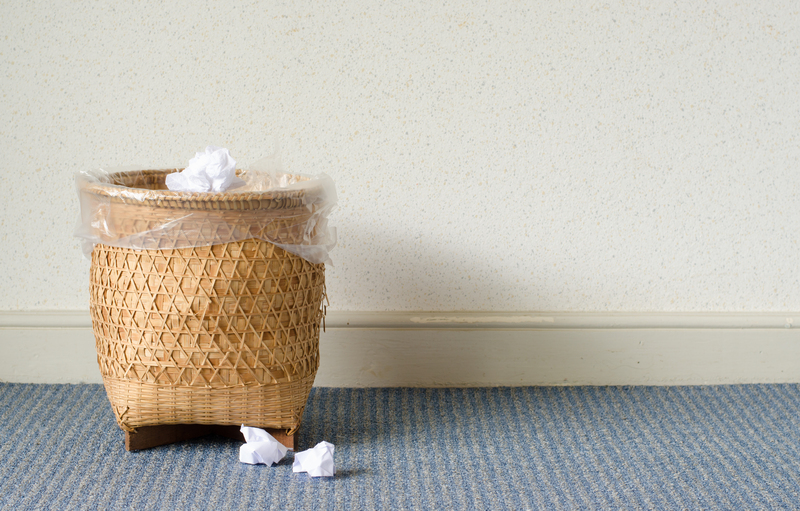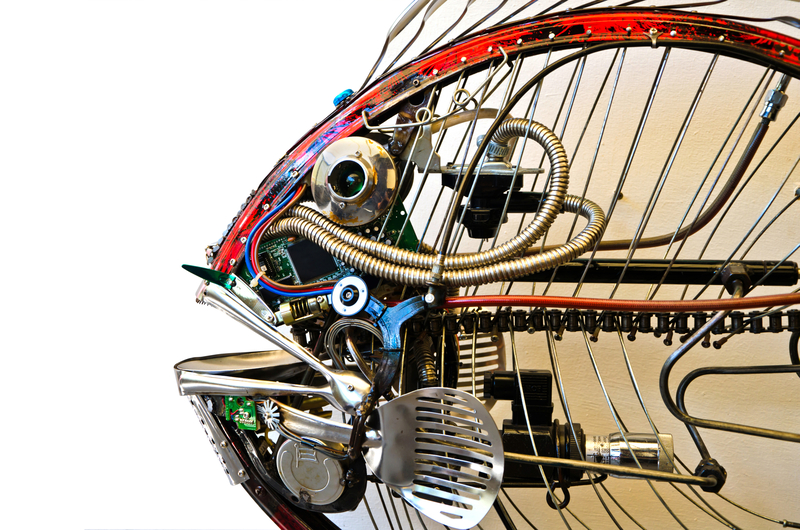Creating a Culture of Recycling at Home for Kids
Building a culture of recycling at home for kids is more than just sorting trash--it's about instilling lifelong habits that benefit both the family and the planet. Children are naturally curious, and with the right guidance, they can become powerful ambassadors for sustainability. This comprehensive guide will explore practical strategies, engaging activities, and family rituals for fostering a robust household recycling culture tailored specifically for children.

Why Teaching Kids Recycling Matters
The world is facing a growing environmental crisis, but encouraging recycling for children at home can help turn the tide. Kids who learn early to respect resources and reduce waste are more likely to continue these habits throughout their lives. Moreover, children can influence adults and peers, making the household a nucleus of positive change in the community.
- Environmental impact: Recycling reduces landfill overflow and conserves resources
- Educational opportunities: Recycling offers real-world lessons about science and ecology
- Cultivating responsibility: Children develop a sense of stewardship over their environment
The Benefits of Home Recycling for Children
From an emotional standpoint, recycling empowers kids by giving them actionable ways to help the planet. It also nurtures critical thinking--children question what waste is and learn to seek out eco-friendly alternatives.
- Improved problem-solving skills
- Increased environmental awareness
- Enhanced teamwork among family members
- Development of healthy eco-conscious routines
Making Recycling Fun and Interactive for Kids
Making recycling enjoyable for kids at home is essential if you want them to adopt these habits. Mix education with entertainment, and use resources suitable for different age groups to keep them engaged.
Age-Appropriate Recycling Activities
- Toddlers: Let them help you sort by color or shape. Use illustrated flashcards to represent different recyclable items like plastic, paper, or glass.
- Preschoolers: Challenge kids to a game of "What Goes Where?" using everyday household items. Encourage hands-on learning through crafts made with recyclable materials.
- School-age children: Give them responsibility for checking if waste is washed, sorted, and placed in the correct bins. Allow them to lead regular "recycling patrols" around the house.
- Teens: Urge them to research local recycling rules, create infographics for the family, or even start a recycling awareness campaign in their school or neighborhood.
The Power of Visuals and Routines
Children love visuals, so use colorful recycling signs and charts by your bins. Mark containers clearly with both words and pictures. Establish a family recycling routine--schedule a specific day each week for kids to help empty bins or visit recycling collection points. Consistency builds confidence and ownership.
Building a Household Recycling System That Works for Kids
Set Up Kid-Friendly Recycling Stations
- Accessible bins: Position bins at a child-friendly height and use lightweight containers.
- Clear labels: Use images and color-coding so young children can participate independently.
- Safe environment: Ensure containers are clean, odor-free, and not too heavy or difficult to open.
Define House Rules for Recycling
Setting clear family guidelines is crucial to develop a repeatable system. Discuss these rules together, encourage questions, and celebrate success.
- Rinse containers before placing them in the recycling
- No food inside recyclables
- Check for the recycling symbol on packaging
- Designate a "captain" each week to oversee sorting and collection (rotate this role to keep it engaging)
Handle Hazards and Exceptions
Not everything can be recycled at home, and some items require special care. Teach older children about the differences between recyclable and hazardous waste (batteries, electronics, chemicals) and why these need separate handling. Explain local rules for items like pizza boxes, greasy paper, or broken glass.
Teaching Kids About the Recycling Process
From Bin to New Product: The Recycling Journey
Kids are naturally curious about what happens after the recyclables leave your home. Explain the journey so they understand the bigger picture and feel a sense of contribution.
- Materials are picked up by recycling trucks and taken to special facilities
- Items are sorted, cleaned, and processed into raw materials
- Raw materials are transformed into new products like clothing, outdoor furniture, or packaging
- Share videos or books showing the process to make it real
Take Field Trips and Meet the Experts
- Visit local recycling centers or community clean-up events
- Invite guest speakers (waste management professionals or environmental advocates) to your next family or school gathering
- Participate in Earth Day activities to reinforce the purpose of recycling at home for kids
Encouraging Lifelong Recycling Habits
Gamify the Recycling Experience
Kids love games and rewards! Keep recycling culture at home vibrant by turning everyday actions into challenges.
- Create sticker charts for proper recycling over a month--offer a treat when goals are met
- Host a "Recycling Olympics" for the family with fun competitions (fastest sorter, most creative reuse project, etc.)
- Use apps that track recycling efforts and provide virtual rewards (many cities offer these for families)
Celebrate Progress and Milestones
Every positive step counts. Celebrate as a family when you hit certain milestones--like reducing your landfill waste by a third, or successfully recycling every piece of paper for a month.
- Throw a "Zero-Waste Pizza Night" and discuss your achievements
- Share stories or photos on social media (with appropriate privacy) to inspire friends and extended family
Involve Kids in Creative Recycling Projects
Crafts and DIY Projects with Recyclables
Let kids tap into their imagination! Use old cardboard, bottles, and jars for art projects, homemade instruments, bird feeders, or science experiments.
- Build a robot from boxes, cans, and caps
- Create planters out of old jars or bottles
- Make collages with used magazines or wrappers
- Turn egg cartons into flower art
Explain how repurposing is a vital step in the recycling process. When children see firsthand how "waste" can become something new, they better appreciate the value of reusing materials.
Storytelling and Learning Through Books
Many children's books celebrate eco-conscious living. Build a mini-library of stories about recycling, upcycling, and protecting the planet to keep enthusiasm high. Let your children lead storytime and discuss what they would recycle if they were a book character.
Modeling Recycling at Home: Leading by Example
Be Consistent and Enthusiastic
Children imitate adult behavior, so demonstrate a genuine commitment to recycling at home. Talk openly about your choices at the grocery store, why you say no to single-use plastics, or how you reuse containers. Enthusiasm is contagious!
Support Older Kids' Initiatives
If older children show interest in broader sustainability topics, encourage them. Help them organize household waste audits, suggest eco-friendly product swaps, or even start a family compost bin. Empower them to conduct presentations or write articles for school about your family's recycling culture.
Overcoming Challenges: Common Barriers and Solutions
Addressing Confusion and Frustration
- Solution: Keep a "What Can We Recycle?" chart visible and update it as local rules change
- Solution: Take five minutes weekly to answer kids' recycling questions
- Solution: Make mistakes part of learning--discuss why certain things can't go in the bin and what to do instead
Time and Space Constraints
- Solution: Use stackable or hanging bins in limited spaces
- Solution: Build a quick and simple routine so recycling never feels like a burden
Recycling Culture Extends Beyond the Home
Encourage children to share their recycling knowledge with friends, classmates, and extended family. Advocate for greener practices during birthday parties, at grandparents', or with neighbors. When kids see adults normalize recycling everywhere they go, the lessons learned at home have a much larger ripple effect.
- Offer to bring "recycling helper kits" to group events
- Suggest eco-friendly gift wrapping made from reused materials
- Lead by inviting peers over for a recycling-themed playdate or workshop

Resource Guide: Teaching Recycling to Kids at Home
Top Online Resources for Kids' Recycling Education
- National Geographic Kids - engaging videos and games on recycling
- EPA's Recycle City - interactive city map to show how recycling works
- BBC Bitesize - curriculum-aligned lessons for science and sustainability
- Recyclenow.com - family activity ideas and up-to-date recycling guidelines
Must-Have Children's Books About Recycling
- The Adventures of a Plastic Bottle by Alison Inches
- Michael Recycle by Ellie Bethel
- Why Should I Recycle? by Jen Green
- One Plastic Bag by Miranda Paul
Conclusion: Building Tomorrow's Green Leaders at Home
Creating a culture of recycling for kids at home is an ongoing journey where patience, creativity, and participation are key. By providing the right environment, hands-on opportunities, and a spirit of teamwork, families can nurture children into lifelong recyclers. Start today--make small, steady changes, model positive behavior, and watch as your home becomes a thriving example of environmental responsibility!
Remember: Every can, bottle, and bit of paper recycled at home by your children is a powerful step toward a more sustainable world. Empower your kids to lead the future of recycling--one home at a time.